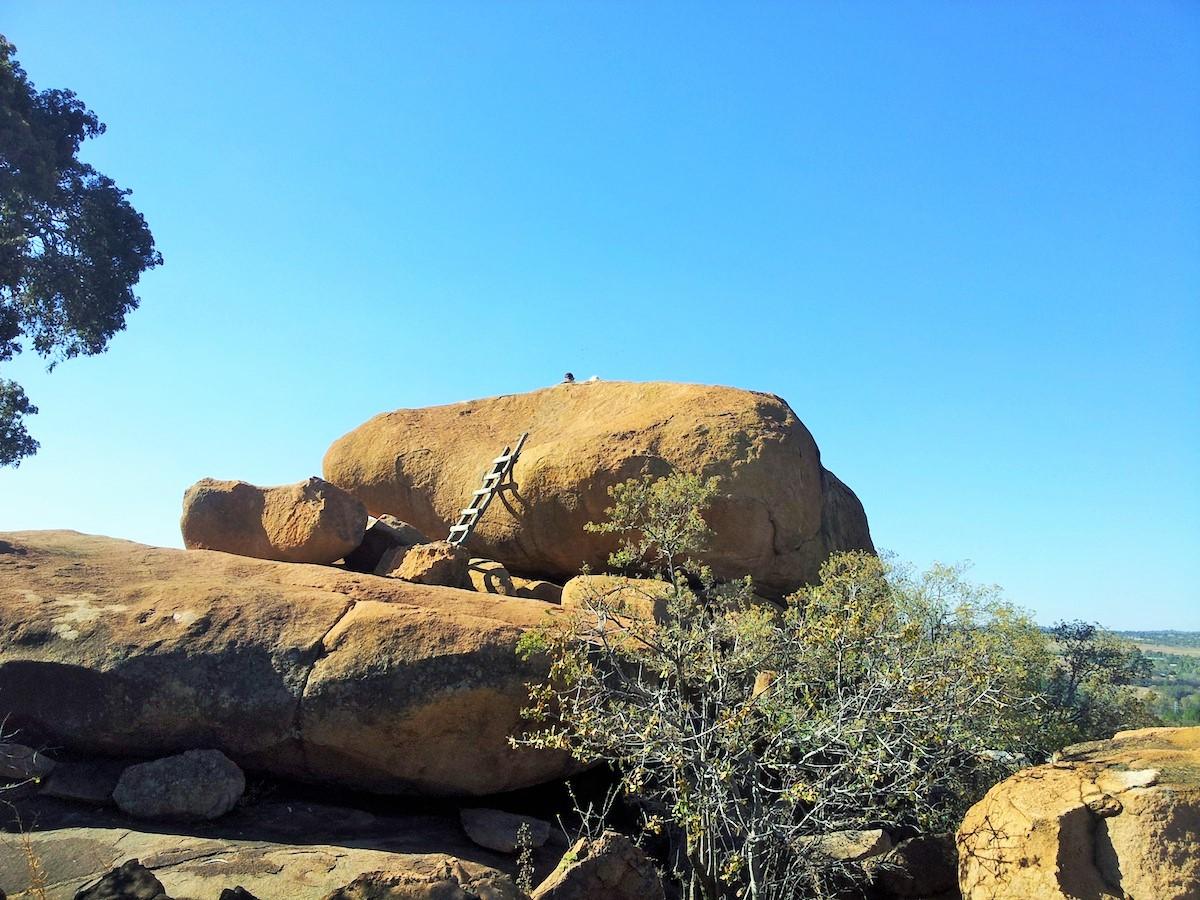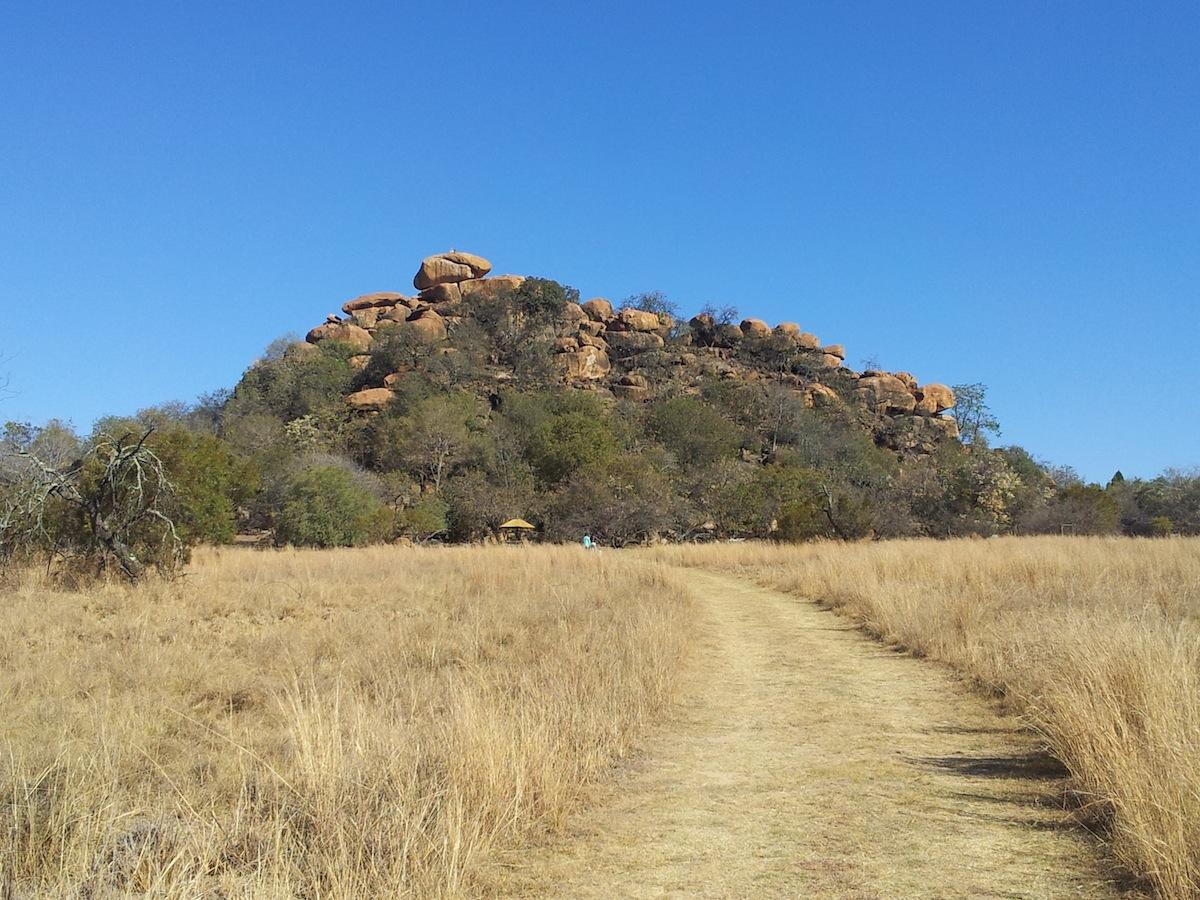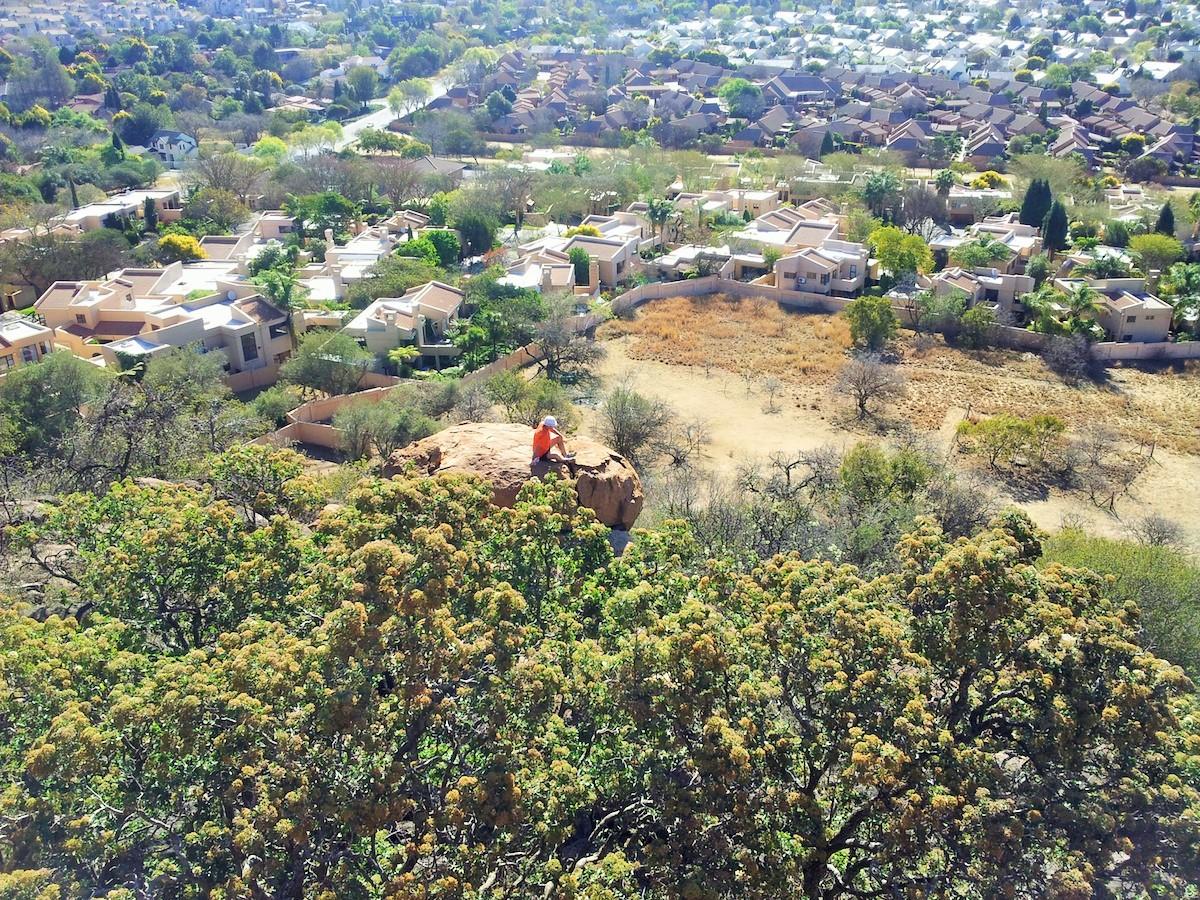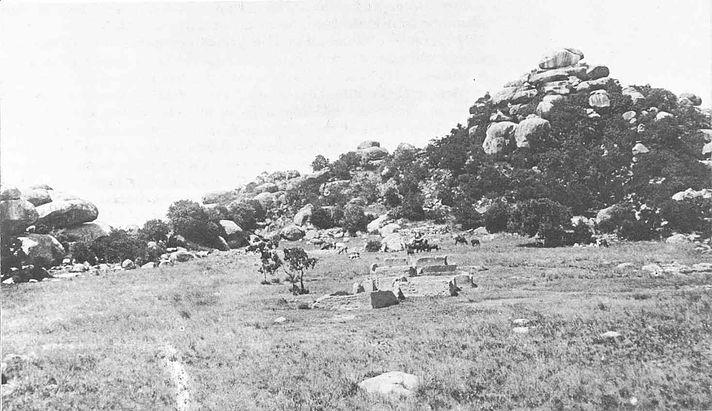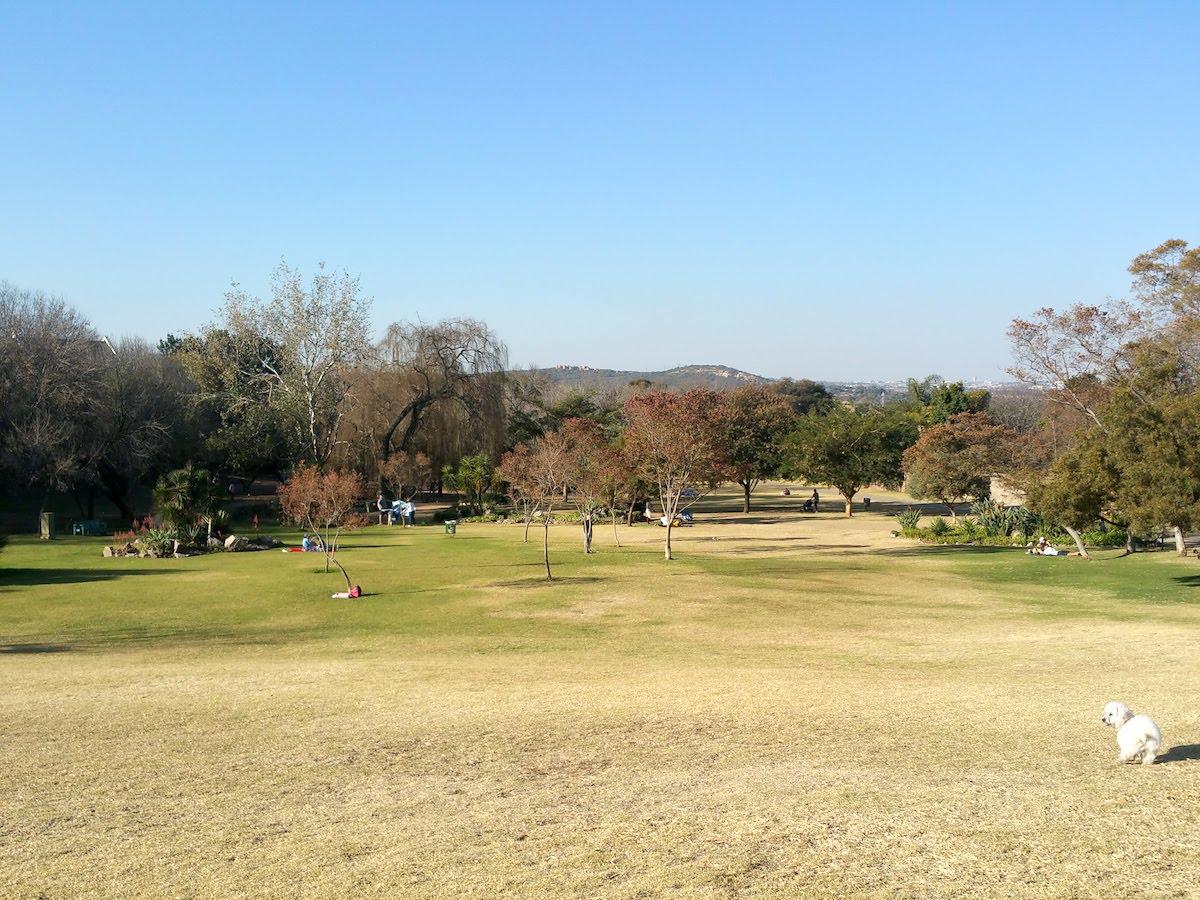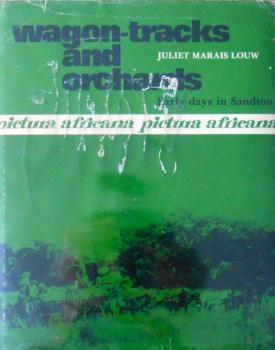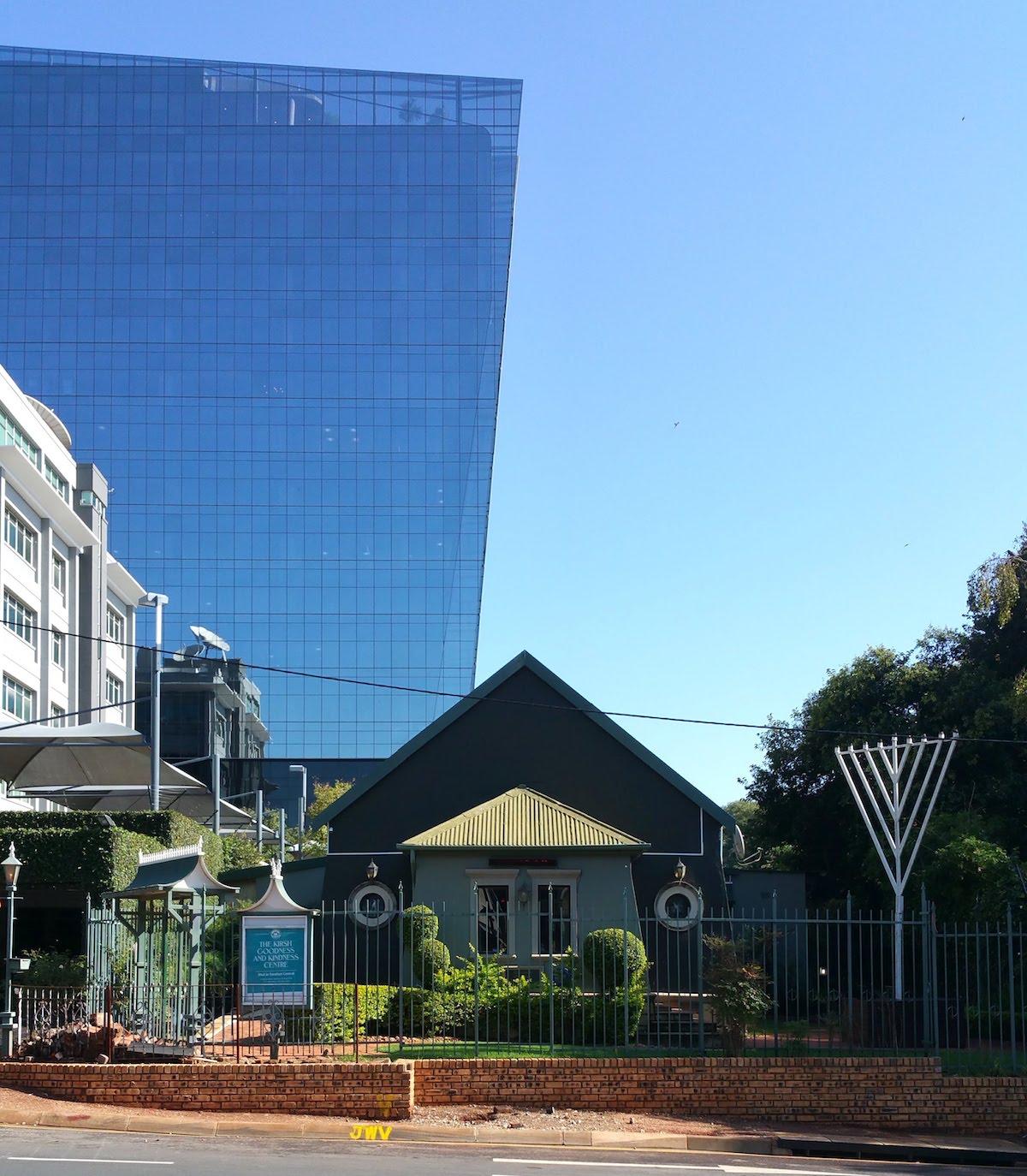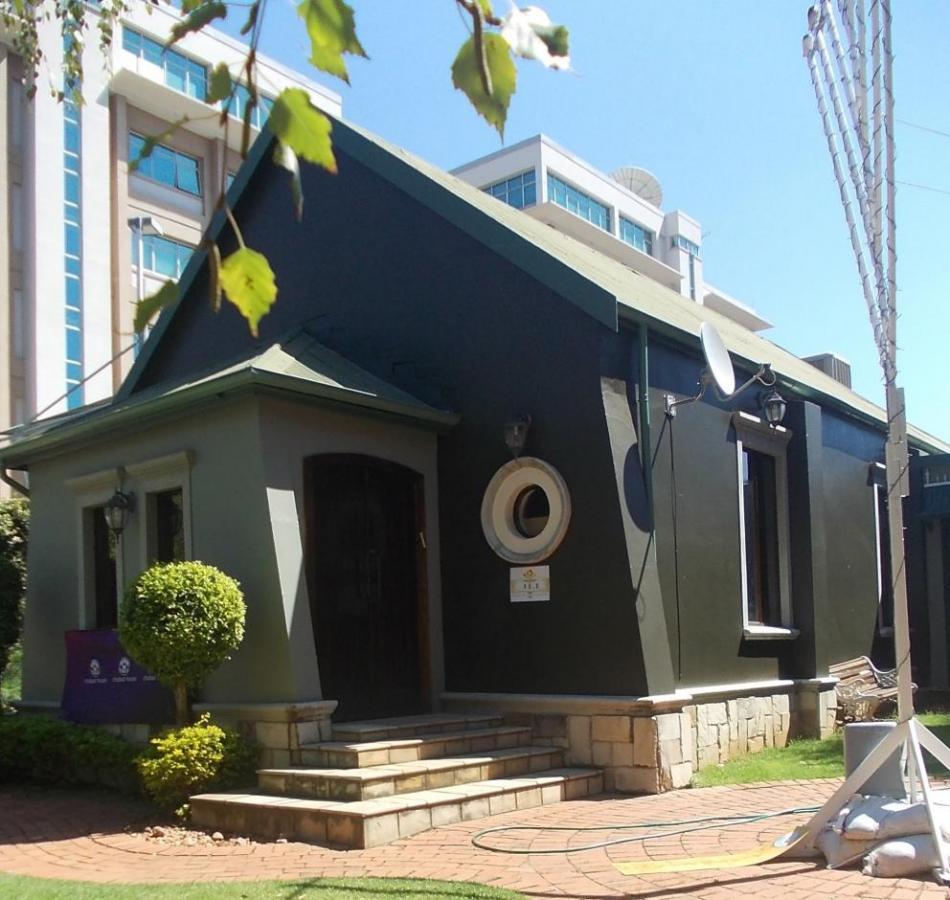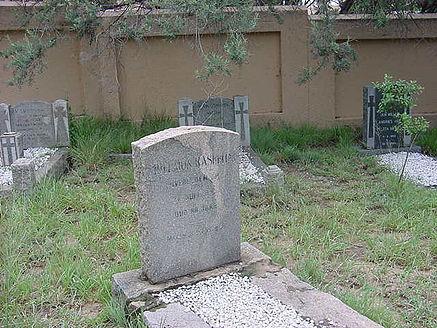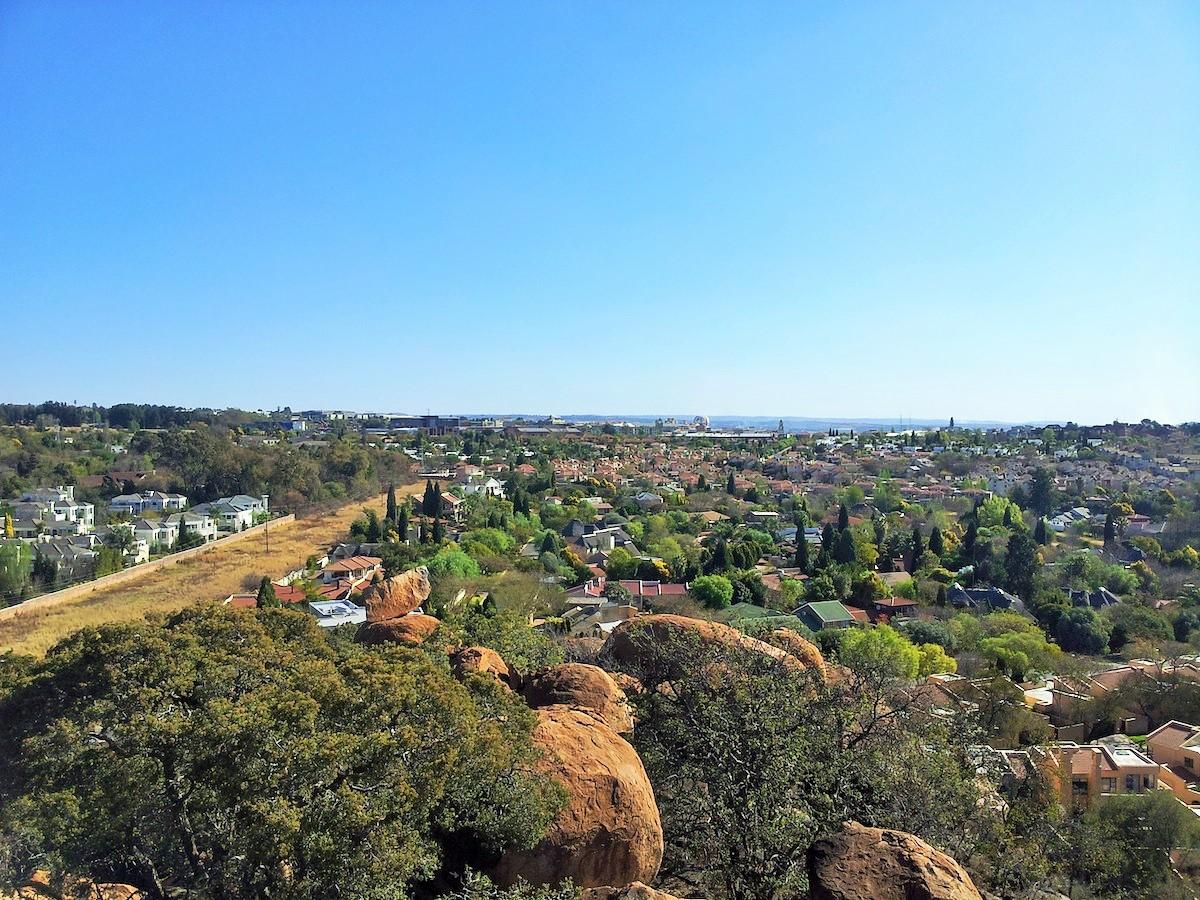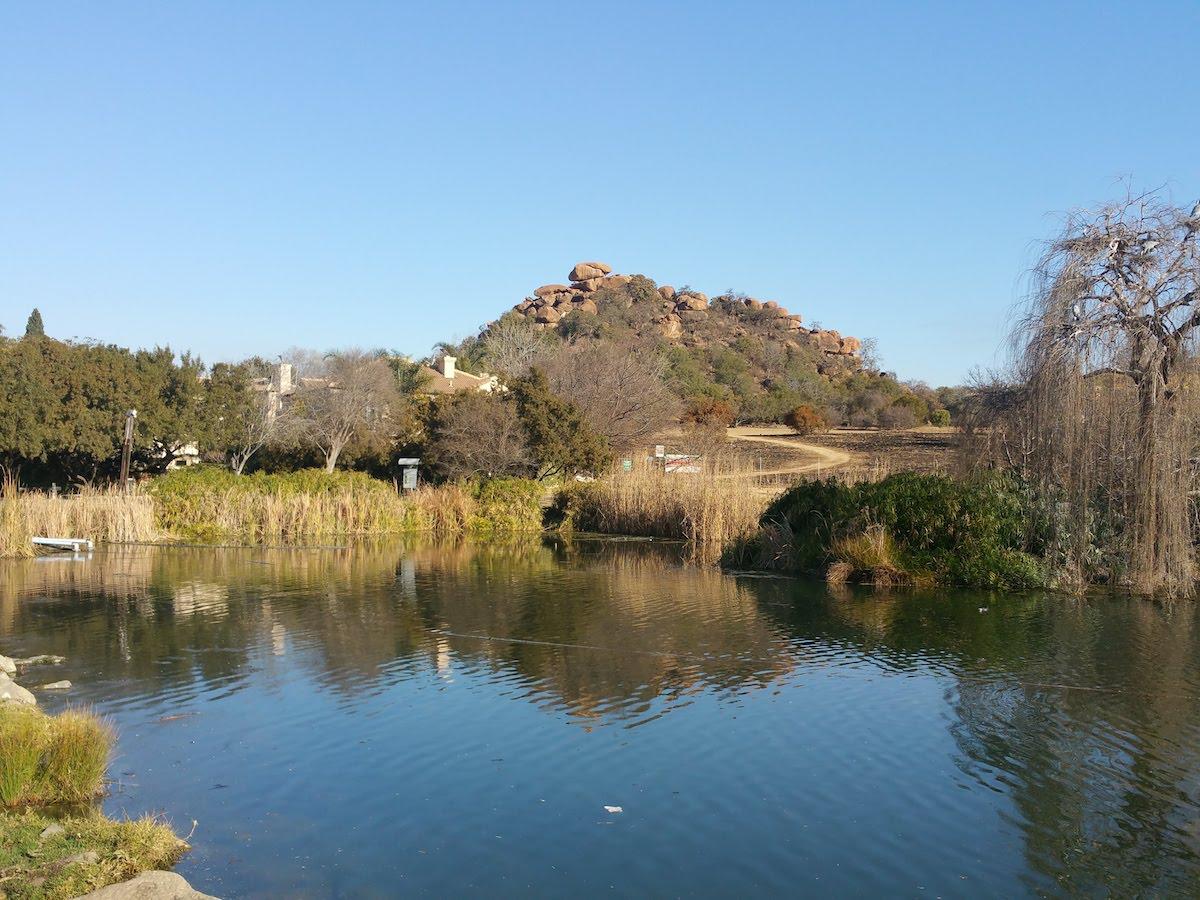
Disclaimer: Any views expressed by individuals and organisations are their own and do not in any way represent the views of The Heritage Portal. If you find any mistakes or historical inaccuracies, please contact the editor.
In the article below, journalist Lucille Davie reveals the rich history of Lonehill in Sandton. She also uncovers some wonderful details about the places, spaces and people of Sandton before it became the financial capital of South Africa. The piece first appeared on the City of Joburg's website on 25 February 2003. Click here to view more of Davie's work.
There’s a story that if the top boulder of the Lonehill Koppie were dislodged, all the whites in the country would leave. It’s a latter-day version of an Anglo Boer War tale: that if the Boers dislodged the rock, the British would lose the war and leave South Africa.
Whatever version you fancy, the top boulder, which balances on several larger boulders, is still firmly in place and although some whites have emigrated, most are just as firmly still in the country.
Ladder to the top (The Heritage Portal)
The Lonehill Koppie is beautiful – it stands out as a lone koppie in the middle of suburbia, some 28 kilometres north of the city centre, and is a reminder of what Johannesburg used to look like before it was settled: rocky veld with small streams trickling through it, dotted with shrubs, small trees and knee-high grasses. Guinea fowl and porcupines used to roam the area around the Koppie, and it’s now populated with dozens of dassies. There’s a small dam, called Lonehill Loch, around 200 metres north of the Koppie, and the space is a popular walking spot for local residents.
The Koppie is mostly made up of large boulders, called tor rocks: very old rocks, with trees and indigenous shrubs now almost obscuring the rocks except for the very top boulders. The room-size boulders of Lonehill have a special quality to them, their towering height and massive shapes overwhelming one on the short hike to the top.
Old rocks covered with shrubs, small trees and and knee-high grasses (The Heritage Portal)
These days it is surrounded by unattractive townhouse developments, in places right up to its perimeter. It is a plot of around 20 acres, with veld surrounding the koppie, which is around 80 metres high. It is fenced and locked, but unlocked on the weekends, allowing hikers and picnickers to climb to the top, or just lay out a picnic blanket in its surrounding grassy area.
Development surrounding Lonehill (The Heritage Portal)
It is an extremely significant site – it has three Stone Age furnaces in the veld below the Koppie. These were excavated in the 1960s by Professor Revil Mason, formerly head of archaeology at Wits University.
The furnaces were covered again by Mason, partly to protect them but partly also because there was no funding to develop the site, which would need a protective structure built around them.
Mason estimates that the furnaces date to around 1600, the same period as the Melville Koppies furnace. Bits of slag have been found near the site of the furnaces, on large flat rocks with indentations in them, obviously used for grinding.
Near the furnace site is another area where pottery was manufactured, fenced like the furnace area.
Half way up the Koppie there’s further evidence of these early pastoral people – remnants of stone walls that would have been a kraal and living areas.
In the early 1990s the Lonehill community drew up a plan to build a museum and an Ndebele village just below the Koppie. Nothing came of it as the funds needed would have run into the millions.
Old photo of Lonehill Koppie (The Heritage Portal)
Lonehill community
The community of Lonehill consists of some 3 000 families, and they’re a very organised bunch of people. Several years back there were two to three crime-related murders in the area. The residents responded proactively. They set up a trust account, in which each family was asked to pay a once-off initial amount of R1 500 into the account. They employed a security company to patrol the suburb in four vehicles and two motorcycles, with nine guards each day and night guarding the area.
One guard is permanently on duty at the dam, and he keeps an eye on mothers and children who come to play at the fenced play park, or walkers who bring their dogs to the dam each day.
The residents association employed an estate manager, Ian Bell, a retired salesman, and he is kept pretty busy.
He says: “We’ve had no shootings or deaths of residents in two and a half years. But we’ve had a number of guards shot at in the line of duty – they are now confronting criminals, two to three of whom have been killed.”
Future security projects include erecting 20 SOS boxes around the suburb.
Bell also has a team of five gardeners. They spend time picking up litter in the suburb, trimming pavement lawns and public gardens. Residents’ funds have been used to buy mowers, and Pikitup have been persuaded to place more rubbish bins around the dam.
Bell also keeps a lookout for illegal dumping or developers contravening the building laws. He reports sewage leaks and potholes to the relevant authorities.
The residents would like to see the Koppie made into a heritage site. The site is owned by the City of Johannesburg, and maintained by City Parks.
Lonehill Park (The Heritage Portal)
Early history
The Koppie is part of two original farms, Zevenfontein and Rietfontein, registered in 1896. Simon Notten, a Hollander, who married Anna, the daughter of Sytze Wierda, President Paul Kruger’s architect, noticed the distinctive koppie, then called Bobbejaanskranz, in 1934 and bought the two farms, consolidating them into one which he called Lonehill.
The granite rock around the base of the Koppie was being quarried by the government, but Notten called a halt to the quarrying. A huge mound of square granite blocks can still be seen at the base of the Koppie.
Notten’s son John moved to Lonehill in 1937. The original farmhouse was a mud and timber structure. Some of the local granite was used to extend and modernise the house.
Notten owned Atholl House in the suburb of Atholl, which stood on 100 acres of land. The house was believed to have been a Herbert Baker design. The farm contained 5 000 fruit trees, and boasted superb quality peaches.
At some point Notten divided his estate into two sections: Atholl and Wierda Valley, both now suburbs to the north of Johannesburg. Notten apparently built a house in Wierda Valley called Wilgendal.
Atholl House, which early Johannesburg resident Juliet Marais Louw describes in Wagon-tracks and orchards – early days in Sandton, was subsequently demolished.
Book Cover
Louw describes the house: “Sunlight flickered through small panes; the great sitting room had a vaulted ceiling and huge, oak beams, a wide stone fireplace with low seats and above it the bookshelves. In the dining room there was a great teak overmantel and china cabinets were built into the alcoves. Almost every room had a fireplace with tiles of blue, orange or white.”
Anna Notten, says Louw, used to hold services in the lounge of Atholl House, reading from a Dutch translation of Reverend Charles Haddon Spurgeon, Baptist preacher of the 19th century. Notten soon hit on the idea of building a church in nearby Sandton. She talked various relatives into donating land, helping with the construction of the church, and making pews, doors and roof struts. The supervising builder, MCA Meischke, had a pulpit made in his Braamfontein workshop.
The church, known as the Sandown Union Church, was opened by the mayor of Johannesburg, EO Leake in 1925. It was interdenominational, with a different minister travelling out from town each week, giving sermons alternately in English and Afrikaans.
The church still stands in Stella Street, Sandton, now surrounded by office buildings and blocks of flats, and looking rather small among its neighbours. It retains its simple whitewashed, A-framed charm.
Little Church in the Pines (The Heritage Portal)
Little Church in the Pines (The Heritage Portal)
Simon and Anna Notten are buried in a quiet corner of the veld below the Lonehill Koppie. Alongside them is a grave with ann equally large headstone belonging to Philemon Rasebitse, who died of a heart attack at the age of 80. Rasebitse was the coachman of the architect Wierda before the Anglo Boer War, after which he went to work for the Nottens.
Lonehill Graveyard (Lucille Davie)
Rasebitse called Anna Notten “Marikasaan”, according to Louw, which translates into “planter of trees”. Atholl and Wierda Valley still boast some of the gums and pines that she planted in those suburbs. He had insisted that he be buried next to Notten, and was given “. . . a slap-up funeral, with a polished coffin and a hearse and an Anglican priest who came out from town”.
The church, which had developed a lively Sunday school following, and later had a school operating from a hall built behind it, gradually lost its congregation and its doors were closed in the 1950s. In 1966 a group of dedicated workers from the Rosebank Union Church spent some weeks cleaning out the church and replanting the garden.
Today the church has outgrown its congregation of 70, with parking being a major problem. Sunday services are held in the nearby Montrose School hall. The church is an active place of counselling to the local community, both poor and wealthy.
The Nottens no longer have a presence at the Lonehill Koppie. The farmhouse that they extended over the years no longer exists – it’s been swallowed up in a townhouse development. All that remains is a water tank erected on a concrete structure, and the graveyard.
View from Lonehill (The Heritage Portal)
Lucille Davie has for many years written about Jozi people and places, as well as the city's history and heritage. Take a look at lucilledavie.co.za
Comments will load below. If for any reason none appear click here for some troubleshooting tips. If you would like to post a comment and need instructions click here.

